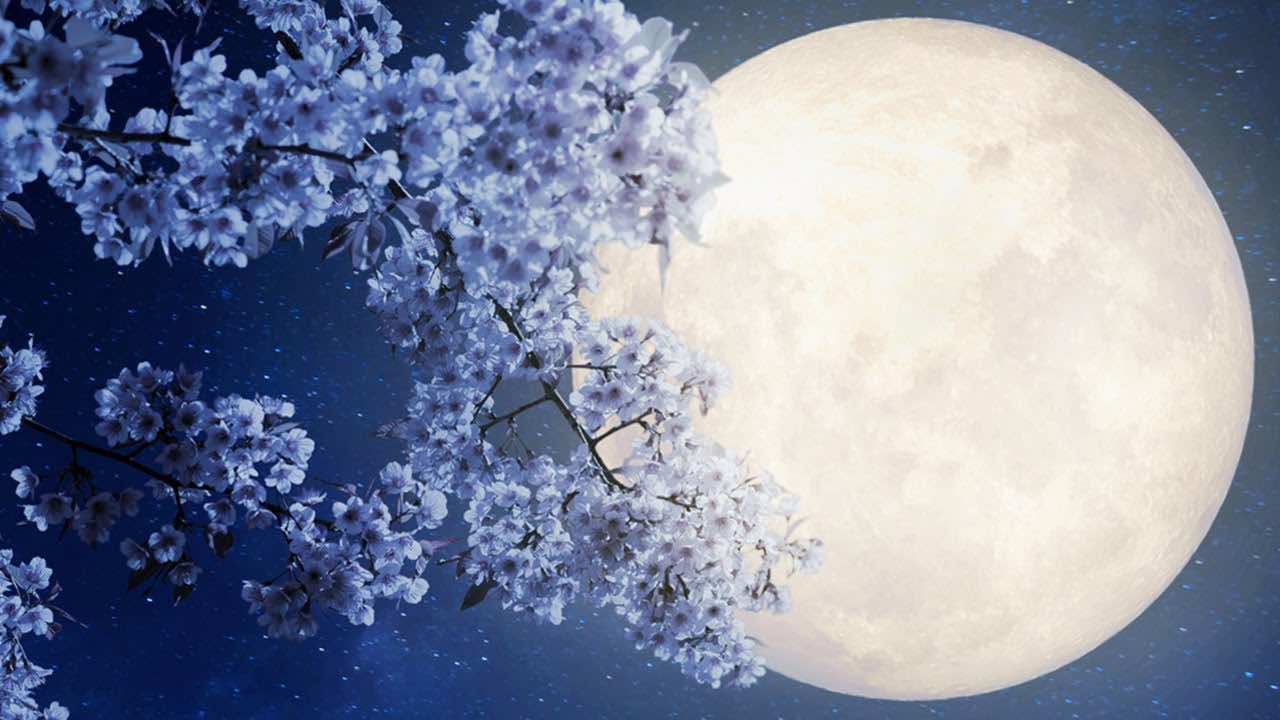
Rabat – The last supermoon of 2020, dubbed the “Full Flower Moon” or the “Super Flower Moon,” is set to rise tomorrow morning, appearing opposite the sun.
The supermoon peaks in Morocco at 10:45 a.m. (6:45 a.m. EDT) on May 7. However, the moon will not be visible to the naked eye past sunrise, as it will be below the horizon at the time of its full illumination. Skywatchers should go out tonight to get the best view of the Flower Moon when it will be approximately 98% full.
According to a 1930s publication in the Maine Farmer’s Almanac, the Full Flower Moon got its name from the Native American Algonquin tribes of what is now the northeastern United States. The tribes chose the name based on the abundance of flowers at the time of its rising, such as anemone, wild garlic, indigo, bluebells, lupine, sundrops, and violets.
Other Native American names for the May supermoon include the “Corn Planting Moon” and the “Milk Moon.”
The supermoon is also known as the “Vesak Festival Moon” as it corresponds with a Buddhist holiday called Vesak, sometimes informally called “Buddha’s Birthday.”
Vesak, or Buddha Purnima, commemorates the birth, enlightenment, and death of Gautama Buddha. The date of the holiday varies according to the calendars used in different countries and regions, but in most areas, this year’s Vesak coincides with the supermoon.
Another astronomical delight will present itself tomorrow morning: Jupiter, Saturn, and Mars will be visible in the southeastern sky. The three planets will appear at the time twilight begins, and Vega, a bright star, will appear nearly directly above them. Vega is one of the three stars in the “Summer Triangle.”
To view the supermoon tonight and the planets and stars tomorrow morning, head to a clear area with an unobstructed view of the sky.
What are supermoons?
A supermoon is a full moon that appears larger than other moons due to its elliptical or oval-shaped orbit, which places the moon closer to Earth.
This phenomenon occurs when a moon becomes full at the same time it reaches its closest point to Earth, known as its perigee point. The occurrence is officially called a perigee-syzygy.
On average, supermoons are approximately 7% bigger and 15% brighter than a typical full moon.
The current moon began its cycle on April 23 and entered its first quarter on April 30. The moon is set to enter its third quarter on May 14 and will have a total duration of 29 days, 15 hours, and 13 minutes.
The Full Flower Moon follows the largest supermoon of 2020, the “Pink Moon,” which rose on April 8 at approximately 3:35 a.m. local time. April’s Pink Moon was the first full moon of spring and the brightest supermoon of the year.
Other 2020 supermoons included the “Snow Moon” on February 9, although some sources debate its qualification as a supermoon, and the “Worm Moon” on March 9-10.
The Full Flower Moon will not be as big or as bright as the previous supermoons of 2020, but it will surely be a sight to behold nonetheless.
Read also: Morocco’s Cadi Ayyad University, NASA Explore Extrasolar Planetsrbal Malagasy Cure for COVID-19
https://news.google.com/__i/rss/rd/articles/CBMidGh0dHBzOi8vd3d3Lm1vcm9jY293b3JsZG5ld3MuY29tLzIwMjAvMDUvMzAxNzQwL3doZW4tYW5kLWhvdy10by1zZWUtdGhlLWZ1bGwtZmxvd2VyLW1vb24tdGhlLWxhc3Qtc3VwZXJtb29uLW9mLTIwMjAv0gF4aHR0cHM6Ly93d3cubW9yb2Njb3dvcmxkbmV3cy5jb20vMjAyMC8wNS8zMDE3NDAvd2hlbi1hbmQtaG93LXRvLXNlZS10aGUtZnVsbC1mbG93ZXItbW9vbi10aGUtbGFzdC1zdXBlcm1vb24tb2YtMjAyMC9hbXAv?oc=5
2020-05-06 18:43:47Z
52780762039696
Tidak ada komentar:
Posting Komentar